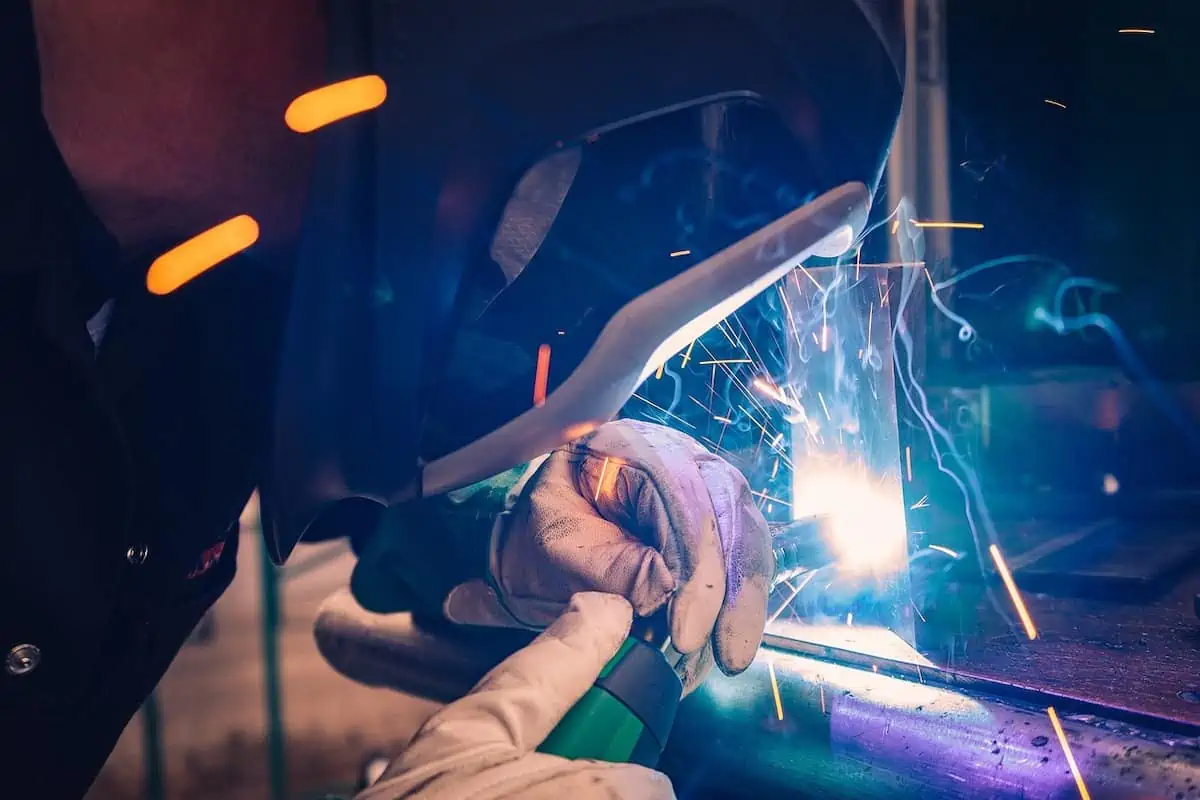The literal meaning of fabrication is the action or process of inventing something.
In a manufacturing context, it means adding value to semi-finished parts or raw materials and making something out of them e.g. metal fabrication is the process of creating metal structures by cutting, bending, and assembling metal pieces that are used in making machines, parts, and structures.
Welding is a common example of fabrication.
This metalwork is important for all types of machinery from car manufacturing, and computer-aided manufacture to food packaging systems. Prefabrication is a type of fabrication that is not to be confused with conventional construction work which consists of transporting all the basic material to the site and constructing the final project there.
With prefabrication, parts are produced in a factory and then transported to the site for the assembly only e.g. prefabricated concrete panels. However, this does not include electronic parts like compressors. All this to say; the term fabrication overlaps with many other production processes and it might be confusing sometimes, to classify production processes as fabrication or not.
Typically, fabricator work requires expertise and experience so; this is hands-on work; cutting, shaping, and connecting pieces in metal fabrication and making large, complex artworks in art fabrication, therefore, in the past, there was little to no room for automation in a fabricator’s work, however, with the ever-improving technological market, fabrication automation is something that many fabricators are now slowly opening up to.
The Automation of Fabrication
Automating the production process is a daunting idea at first because it seems so complex and pricey from afar however, the manufacturers of such machinery always aim to make the control of the machine as sophisticated and simple as possible in order to win over more customers as fabricators start to get their feet wet with this system.
The application of automation can be as simple as stacking sheets of metal all the way to hours of welding work and complex testing of the constitution of drinks such as beer for consistent quality.
Believe it or not, small shops are more inclined to use automated technology in their shops as; the setup is not as expensive as some other equipment available in the market. Secondly, it gives the owner a sense of control as the machine can do more work than multiple workers combined, in exactly the way the owner wants it done. He does not have to supervise each worker and work on months of training to get them to perform the task by feel.
Although the most obvious benefit of using automation is the reduced cycle time and manpower needed, there are a few other reasons that a fabricator may switch to machines; reduced waste is an advantage of machinery as, in metal fabrication, a worker may need to cut a long tube of metal, bend it and then cut it to size which causes scrap to accumulate.
A machine can estimate the exact size, cut it and then bend it afterward, increasing efficiency. Another aim with automating could be the need for flexibility, making different sizes and shapes of a product or even varying inputs and completely changing the end product, all with the change of a couple of parts and a well-programmed machine.
How does Automation Work
A machine works very similarly to a computer, you have input, the computation, and output. What varies here is that the input needs to be selected. A part may only require a certain thickness of metal or a certain number of a product in a carton.
For this purpose, since a machine does not have senses as a human does, manufacturers use certain input methods such as scales, sensors, or vision systems for detecting shapes like in the pick and place automation system by PWR pack. The larger the number of variables in a machine, the more that can go wrong so, it is very important to closely inspect the input process as a machine can not only make good products consistently but also bad ones.
The next step is the logic unit or the computation, oftentimes the supplier of the machinery will program the machine for the fabricator as it already comes with software, and all that has to be done is tap a few icons as you normally would with an iPad.
As the fabricator gets more comfortable with the machinery, he can program it himself or hire a worker who has a bit of experience with such machines. An expensive, highly qualified person is definitely not required for the job. Lastly, the output is the machine’s job with consistent quality throughout due to automation.
The question pops up, which part of the fabrication should be automated? An 80/20 rule is something a lot of fabrication automation suppliers use. The process which takes up 80% of the fab shop (fabrication shop) should be automated. Reducing manpower and time wastage are other ways that fabricators may decide what to automate first.

